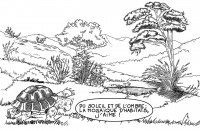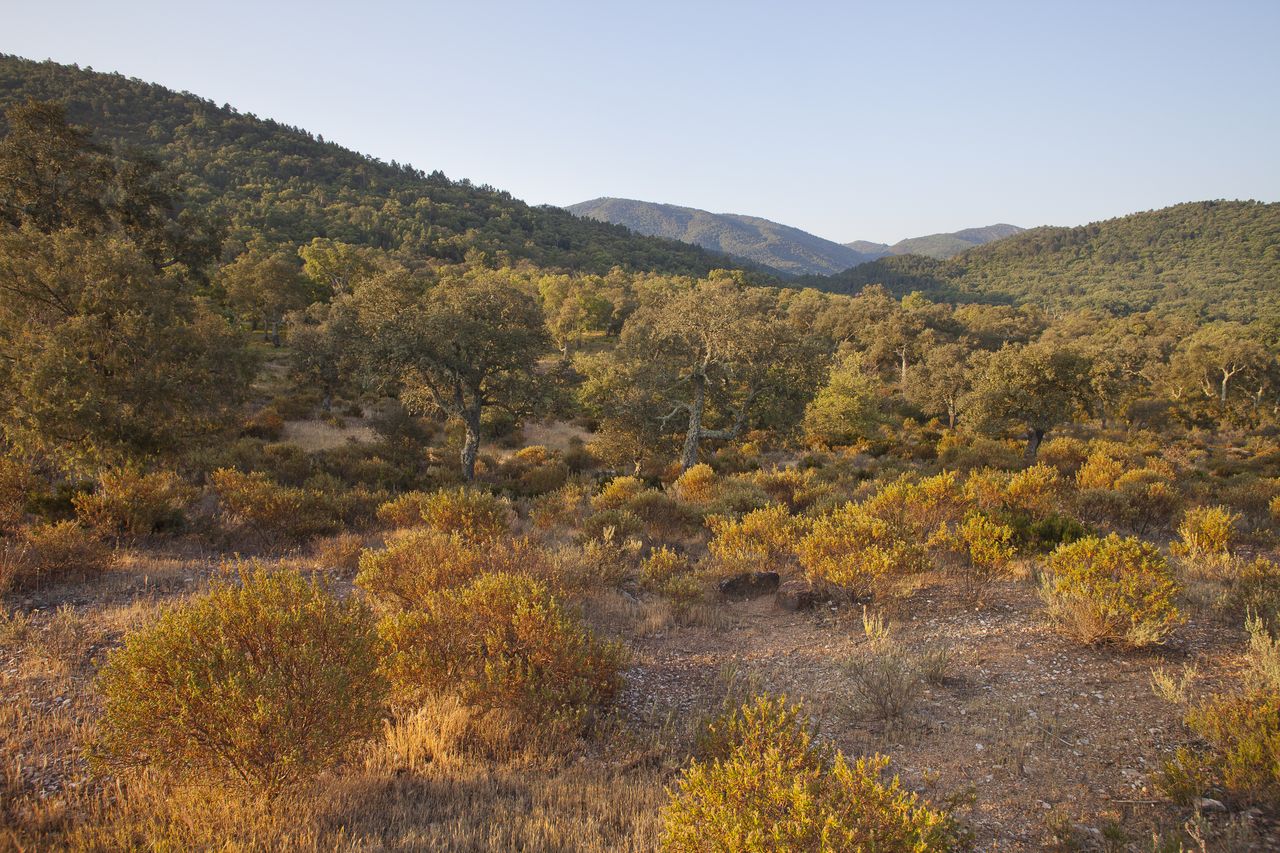Habitats
Hermann’s tortoises can be found in various types of Mediterranean vegetation ranging from sea level up to around 700m. Its current distribution in France corresponds almost exactly with that of cork oak stands. These represent its last refuge, in Provence as in Corsica.

In Provence, several population nuclei are associated with old agricultural holdings, where a mosaic of landscapes still persists, alternating open woods, moors, Cistus shrubs, maquis, woodland understory, glades, crops (vineyards, olive groves, sweet chestnut) and fallow areas.
In the Plaine des Maures, Hermann’s tortoises are found in scattered pine forests, oak woodlands, tall thick maquis, low sparse maquis.
The presence of bare ground for laying eggs, grassy areas for feeding and water points is crucial.
The species is not usually found in vineyards which are still being worked, and generally avoids very open habitats where the soil is bare and the vegetation very short. It may however use them to reach a suitable habitat.
Tortoises are rare, if present at all, in dense forests, and infrequently found in areas of thick maquis.

Illustration of Hermann’s tortoise favorable habitat
During its annual cycle, Hermann’s tortoises may use quite different habitats.
Between April and June, during their most active period, and during the autumn, they favour open to
semi-open habitats with a significant amount of ground vegetation.
In summer, they use cooler and more humid habitats.
In winter, Hermann’s tortoises prefer well drained habitats, safe from flooding. They generally hibernate in scrub or buried under a layer of leaves.
The tortoise has need of a mosaic of different natural environments, which has guided the management measures of habitat in the Life program.
